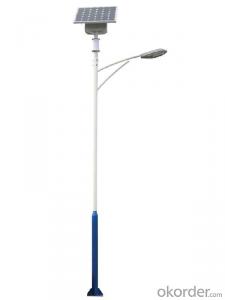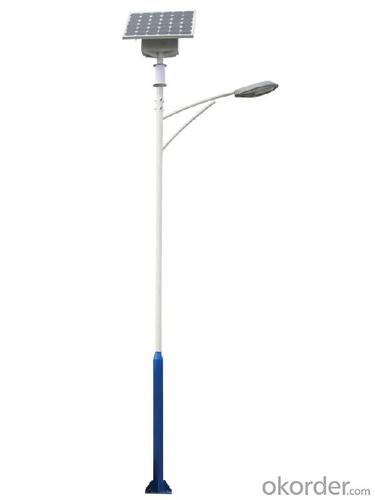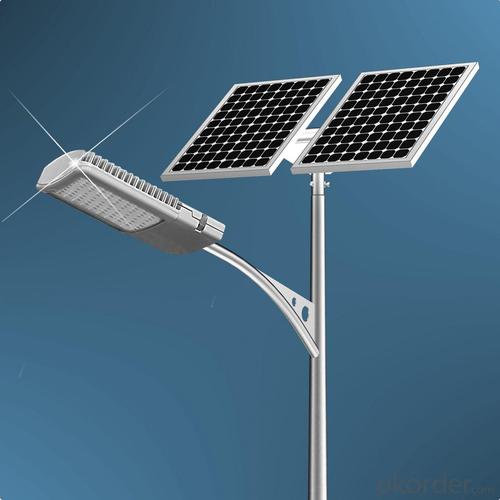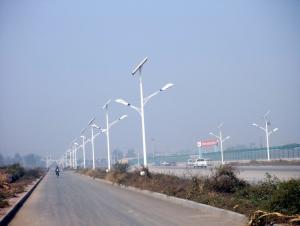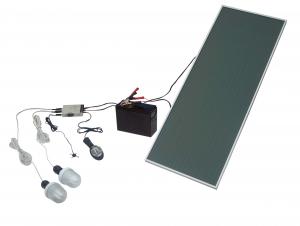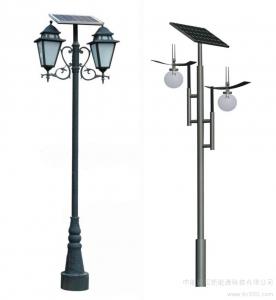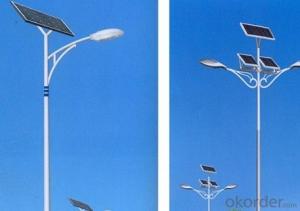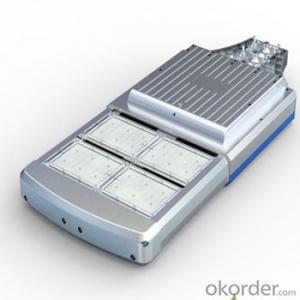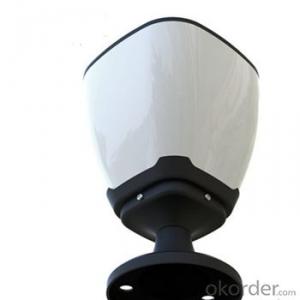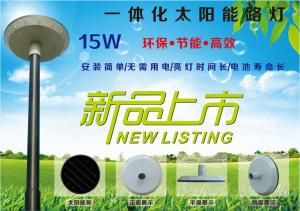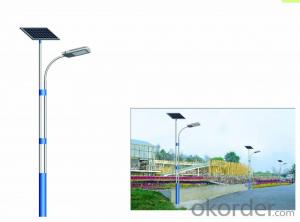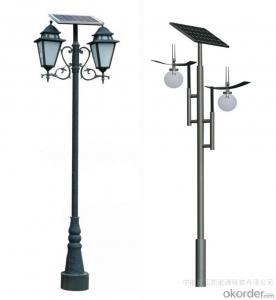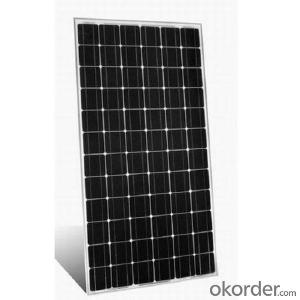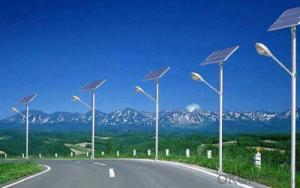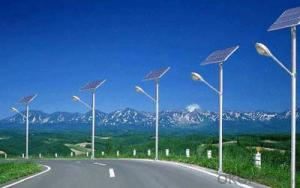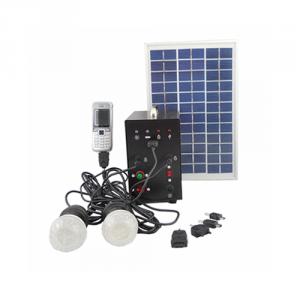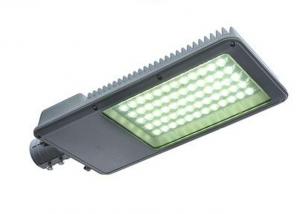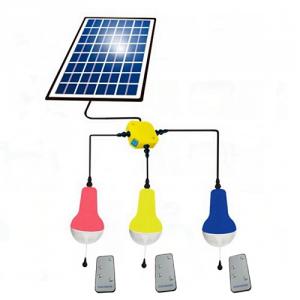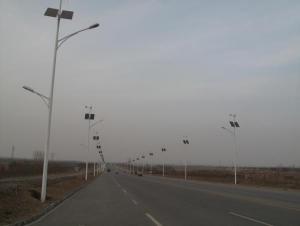Lowes Solar Light - Off Grid New Energy DN 900 Solar Product
- Loading Port:
- Shanghai
- Payment Terms:
- TT OR LC
- Min Order Qty:
- 1 watt
- Supply Capability:
- 5000 watt/month
OKorder Service Pledge
OKorder Financial Service
You Might Also Like
1, Product desciption
Inverter circuits designed to produce a variable output voltage range are often used within motor speed controllers.
The DC power for the inverter section can be derived from a normal AC wall outlet or some other source. Control and feedback circuitry is used to adjust the final output of the inverter section which will ultimately determine the speed of the motor operating under its mechanical load.
Motor speed control needs are numerous and include things like: industrial motor driven equipment, electric vehicles, rail transport systems, and power tools. (See related: variable-frequency drive ) Switching states are developed for positive, negative and zero voltages as per the patterns given in the switching Table.
The generated gate pulses are given to each switch in accordance with the developed pattern and thus the output is obtained.
Solar power is energy from the sun. "Solar" is the Latin word for "sun" and
And Powerful source of energy. Without it, there will be no life.
Solar energy is considered as a serious source of energy for many years
of the vast amounts of energy that is made freely available, if harnessed by modern technology.
A magnifying glass can be used to heat up a small amount of water.
The short piece of copper tube is sealed at one end and filled with water.
And magnifying glass is then used to warm up the pipe.
Using more than one magnifying glass will increase the temperature more rapidly.
2, Features of the product
Inverters convert low frequency main AC power to higher frequency for use in induction heating.
To do this, AC power is first rectified to provide DC power. The inverter then changes the DC power to high frequency AC power. Due to the reduction in the number of DC Sources employed, the structure becomes more reliable and the output voltage has higher resolution due to an increase in the number of steps so that the reference sinusoidal voltage can be better achieved.
This configuration has recently become very popular in AC power supply and adjustable speed drive applications. This new inverter can avoid extra clamping diodes or voltage balancing capacitors. There are three kinds of level shifted modulation techniques, namely: 1,High and stable conversion efficienly based on over 4 years professional experience
2 ,High reliability with guaranteed +/-10% output power tolerance
3,Proven materials,tempered front glass,and a sturdy anodized aluminum frame allow modules to operate reliably in multiple mountily configurations
4,Combination of high efficicncy and attractive appearance
The first thing to figure out is the length of road in need of street lights.
This can be a small entrance road only a couple hundred of feet long to miles of streets through an area. Does the area currently have any type of lighting available.
What is the reason for needing street lights in this area
Is the electrical grid already nearby or would you need to call in the power company to bring in electrical lines.
If the electric needs to be brought to the area, how much is this going to cost? Depending on how far the grid electric is from the location of the needed lighting, this can be quite expensive.
How much lighting is needed on the street? Do the lights need to be dark sky compliant.
Do the street lights need to run from dusk to dawn or for only a specified number of hours at night.
Are the street lights able to dim in the middle of the night and still provide enough lighting.
These questions need to be answered before you can decide on how many lights you will need to complete the project.
3, Detailed Specification
Data Sheet of High Quality Solar Controller Tracer-1210RN
Model Tracer-1210RN
Rated system voltage 12/24V auto work
Rated battery current 10A
Rated load current 10A
Max.battery voltage 32V
Max.PV open circuit voltage 100VDC
Max.PV input power 12V 130W;24V 260W
Self-consumption <10mA(24V)
Charge Circuit Voltage <=0.26V
Discharge Circuit Voltage Drop <=0.15V
Communication TTL232/8 pin RJ45
4, Product Image

- Q: Are there solar lights with adjustable beam angles?
- Yes, there are solar lights available with adjustable beam angles. These lights allow users to customize the direction and spread of the light beam based on their specific lighting needs or preferences. Adjustable beam angles provide greater flexibility in illuminating different areas or highlighting specific objects or features.
- Q: Are there solar lights for pathways or driveways?
- Yes, there are solar lights specifically designed for lighting pathways and driveways. These lights are equipped with solar panels that harness sunlight during the day to power the LED lights at night. They are a popular and eco-friendly choice for illuminating outdoor areas while providing safety and aesthetics.
- Q: Can solar lights be used for outdoor weddings and events?
- Absolutely! Outdoor weddings and events can certainly make use of solar lights. They are actually quite popular and environmentally friendly for such occasions. Solar lights come in various styles and designs, such as string lights, lanterns, and decorative pathway lights, making them versatile and suitable for different outdoor settings. Since they are powered by sunlight, there is no need to fret about electrical outlets or wiring, making them convenient and easy to use in any outdoor location. Additionally, solar lights can create a stunning and romantic atmosphere, bringing an elegant touch to your special event. Moreover, they are a cost-effective option as they do not require electricity to operate, allowing you to save on energy costs. Overall, solar lights are an excellent choice for outdoor weddings and events, offering both practicality and aesthetic appeal.
- Q: Can solar lights be used with timers?
- Yes, solar lights can be used with timers. They typically have a built-in light sensor that allows them to automatically turn on when it gets dark and turn off when it gets bright. However, if you want to control the operation of solar lights more precisely, you can connect them to an external timer that allows you to set specific on/off times according to your preferences.
- Q: Can solar lights be used for deck or patio lighting?
- Deck or patio lighting can indeed utilize solar lights. They are, in fact, a popular and convenient choice for brightening outdoor areas. Solar lights are specifically engineered to absorb sunlight during the day and convert it into energy. This energy is then utilized to power the integrated LED bulbs during the night. Consequently, there is no need for any electrical wiring or outlets, making installation and relocation hassle-free. Solar lights are available in various styles and designs, such as string lights, pathway lights, spotlights, and decorative lanterns. This wide range allows you to select the ideal option that complements the aesthetic of your deck or patio. Moreover, solar lights are environmentally friendly and economical as they do not depend on grid electricity. They automatically activate at dusk and deactivate at dawn, providing a gentle and ambient illumination for your outdoor space without any additional effort or cost.
- Q: Do solar lights have a warranty?
- Yes, solar lights typically come with a warranty. The length and coverage of the warranty may vary depending on the brand and manufacturer. It is recommended to check the product specifications or contact the manufacturer for specific details about the warranty.
- Q: Can solar lights be used for outdoor classrooms?
- Yes, solar lights can be used for outdoor classrooms. Solar lights are a great option for outdoor classrooms as they provide a sustainable and cost-effective way to illuminate the space. They rely on solar energy to charge during the day and automatically turn on at night, providing a reliable and environmentally friendly lighting solution for outdoor learning environments.
- Q: Can solar lights be used in areas with high levels of dust storms or sandstorms?
- Solar lights can indeed be utilized in regions that experience frequent dust storms or sandstorms. Nevertheless, it is crucial to select solar lights that are specifically engineered to endure these challenging conditions. These lights ought to possess characteristics such as sealed components, resilient materials, and protective covers to thwart the intrusion of sand or dust, which could potentially cause harm. In addition, regular maintenance and cleaning might be necessary to guarantee optimal performance in dusty surroundings. In summary, by making the appropriate choice and providing proper care, solar lights can proficiently operate in areas susceptible to dust storms or sandstorms.
- Q: Do solar lights require a specific type of battery?
- Yes, solar lights typically require rechargeable batteries specifically designed for solar-powered devices.
- Q: Can solar lights be used for bicycle or pedestrian paths?
- Yes, solar lights can be used for both bicycle and pedestrian paths. They are a cost-effective and environmentally friendly option for illuminating these paths, providing increased safety and visibility during nighttime or low-light conditions.
Send your message to us
Lowes Solar Light - Off Grid New Energy DN 900 Solar Product
- Loading Port:
- Shanghai
- Payment Terms:
- TT OR LC
- Min Order Qty:
- 1 watt
- Supply Capability:
- 5000 watt/month
OKorder Service Pledge
OKorder Financial Service
Similar products
Hot products
Hot Searches
Related keywords
